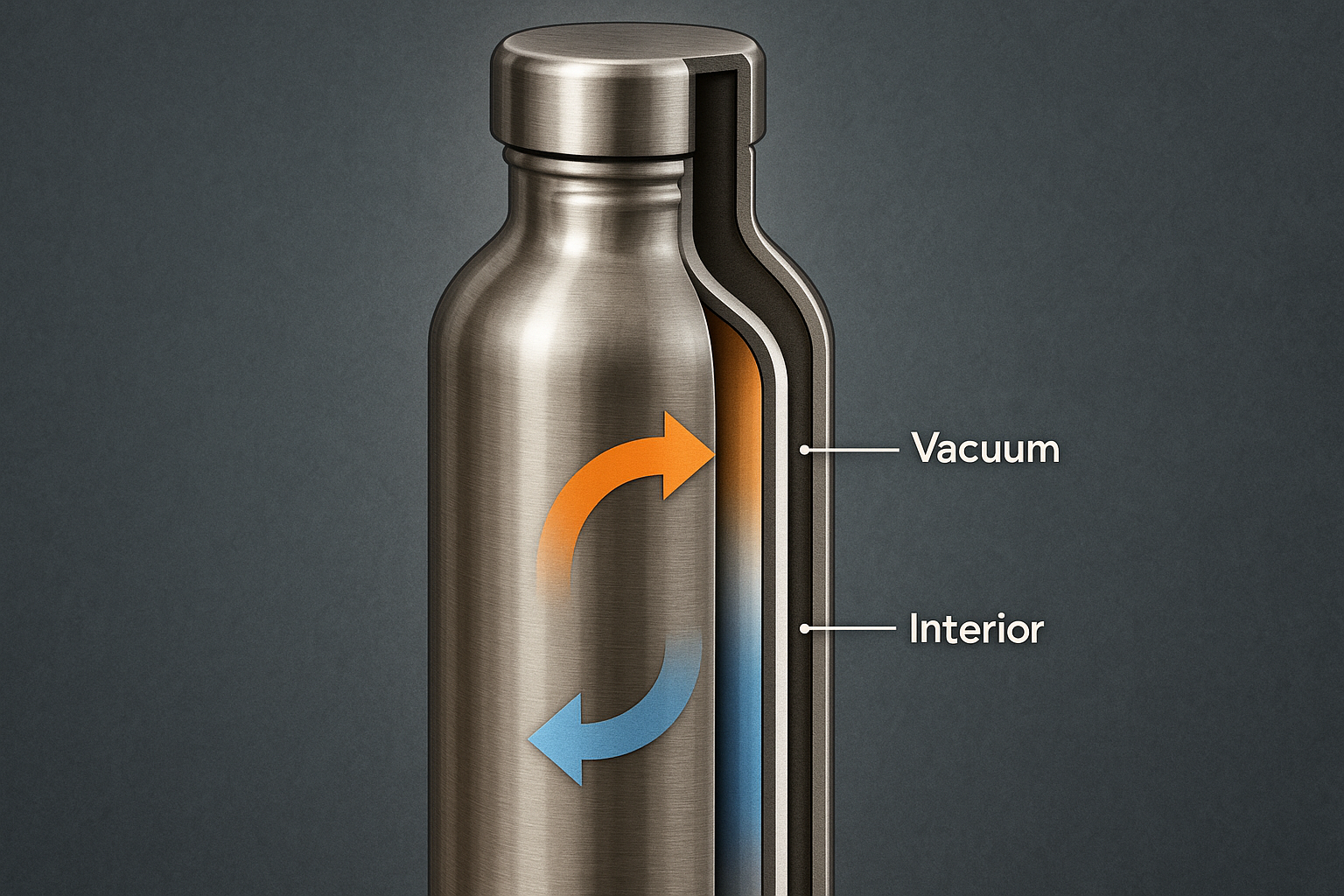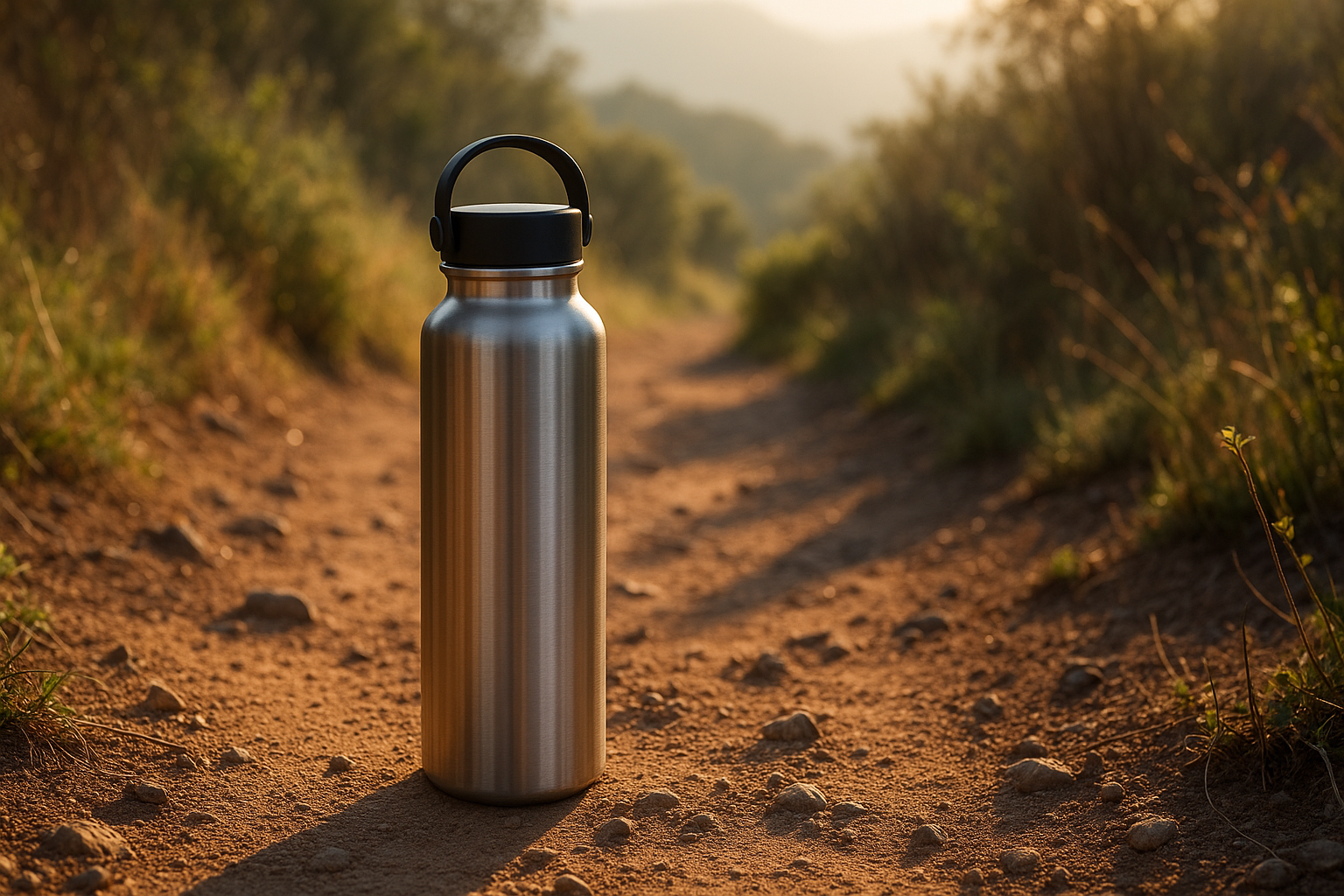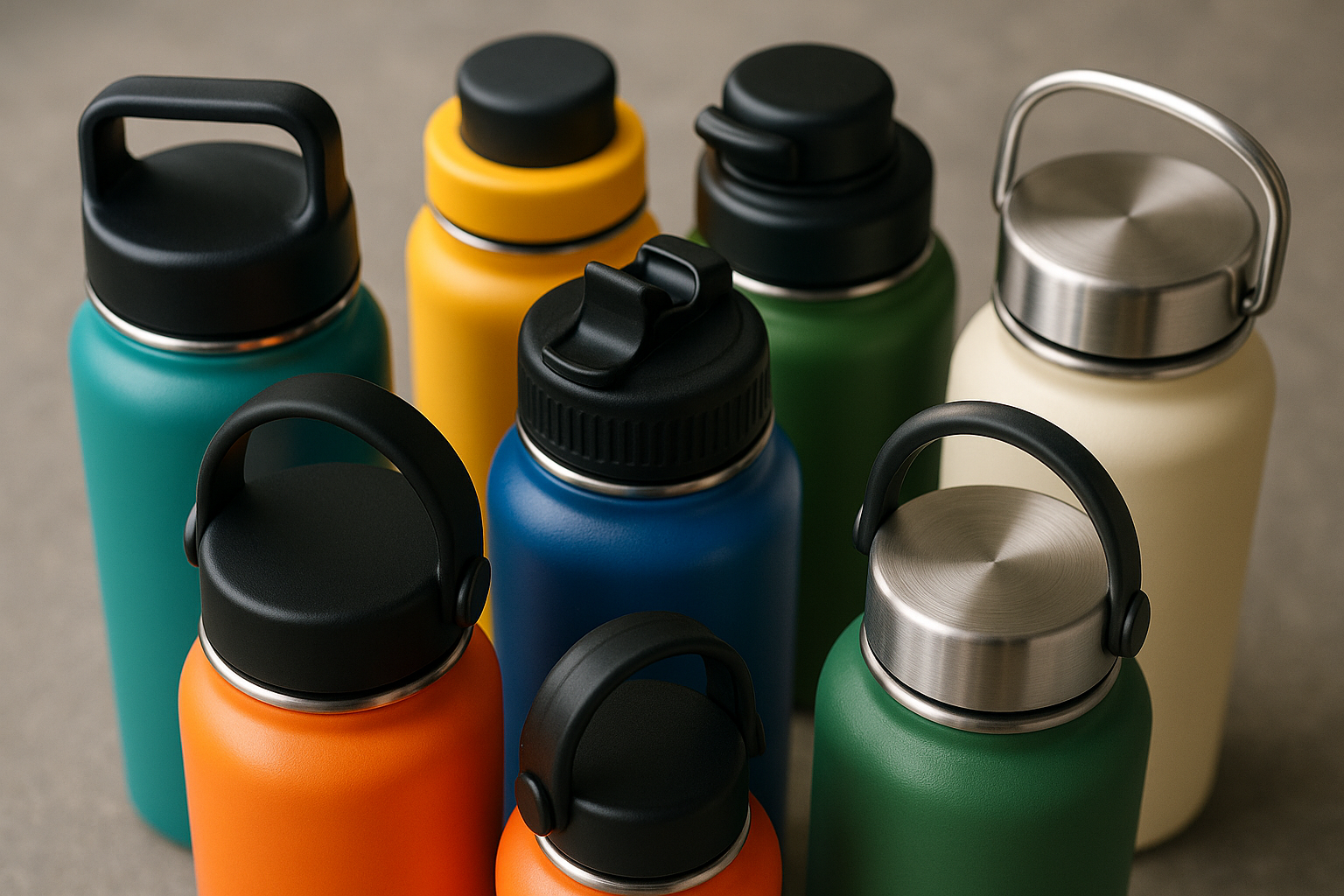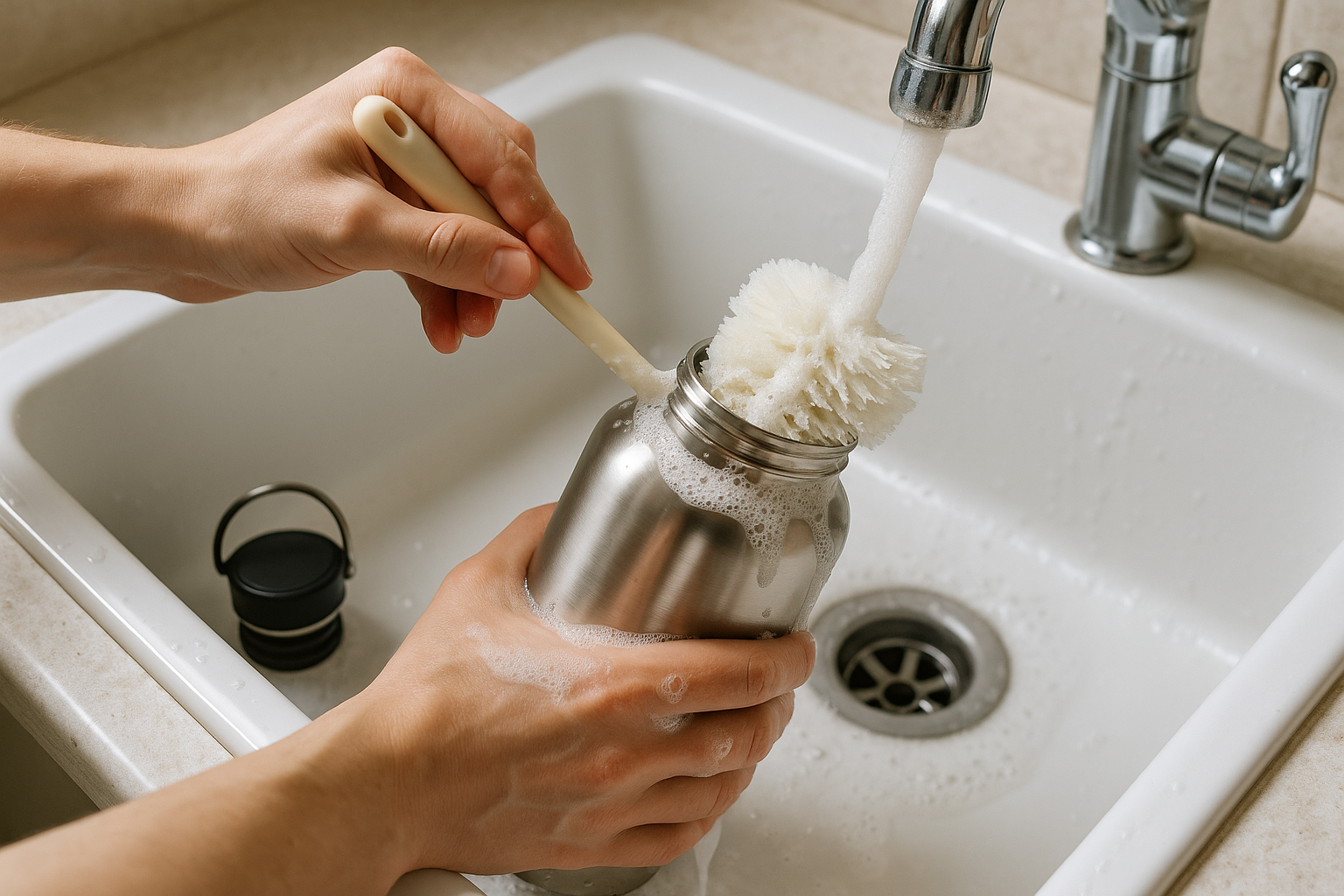Everyone needs to stay hydrated, especially on the go.
But what exactly makes stainless steel insulated water bottles so popular?
This comprehensive guide covers everything you need to know about these bottles.
Some are designed to keep drinks cold for 24 hours.
Some come with leak-proof lids for hassle-free use.
Some sizes fit perfectly in cup holders and backpacks.
Some eliminate plastic contact with your water.
Some have unique insulation layers to keep beverages hot.
Let's dive right in.
What Is a Stainless Steel Insulated Water Bottle and Why Choose One?
Simply put, a stainless steel insulated water bottle is a reusable container made primarily from stainless steel, designed with insulating layers to maintain beverage temperature.
This design means your cold water stays chilly for hours, and hot drinks stay toasty longer. How does it work? Usually through dual or triple-wall vacuum insulation, creating an airless space that blocks heat transfer.
The stainless steel material offers advantages over plastic or glass, such as durability, resistance to corrosion, and no taste alteration.
With growing environmental awareness, these bottles are a sustainable choice, replacing harmful disposable plastic bottles. Plus, they’re BPA-free and won’t leach chemicals, safeguarding your health.
According to experts, themes like durability and insulation performance are crucial when selecting the best bottle for your lifestyle (source).
How Does Insulation Work and Why Does It Matter?
The secret behind stainless steel insulated water bottles lies in their construction. Double-wall or triple-layer insulation traps a vacuum between two or more layers of steel.
This vacuum acts as a thermal barrier, preventing heat exchange with the external environment.
Consequently, cold drinks remain cold up to 24 hours, and hot drinks can last for 6 to 12 hours or more, depending on the bottle model.
Take the ThermoFlask model, for instance. Equipped with double-wall vacuum insulation, it maintains drink temperatures and prevents condensation on the bottle's surface (video source).
Why does insulation matter? Because it means you don’t need to refill or reheat your drink constantly, offering convenience whether at the gym, office, or outdoors.
The following image shows a cross-section diagram of vacuum insulation in these bottles.

What Are the Health Benefits of Using Stainless Steel Insulated Water Bottles?
Bottled water has long been a staple, but plastic bottles often contain Bisphenol A (BPA), a chemical linked to hormone disruption and other health issues.
Stainless steel bottles avoid this risk entirely. They don’t use BPA or other harmful chemicals in their manufacturing, ensuring that no toxins leach into your drinks (source).
Unlike plastic or aluminum with internal liners, stainless steel is inert and non-reactive, so there’s no residual taste or off-putting flavors.
The steel does not retain odors from previously stored beverages, but regular washing is recommended to maintain freshness, especially after liquids like coffee or juice.
Experts in health and environmental safety rate stainless steel as one of the safest choices for everyday hydration (discussion source).
Which Are the Best Stainless Steel Insulated Water Bottles to Consider?
Choosing the right bottle depends on your lifestyle and preferences.
Top brands like Hydro Flask, Takeya, and Yeti frequently appear in expert reviews for their quality, insulation, and usability (source).
Hydro Flask Wide Mouth 24 oz
This model stands out for simple design and excellent insulation. It features a powder-coated stainless steel body and a variety of BPA-free lids. The wide mouth makes it easy to add ice cubes and clean.
It maintains water cold for many hours and is leak-proof. Options of different sizes make it versatile for different uses.
Note: The standard lids have plastic in contact with water, but a stainless steel lid is available separately for those concerned about plastic contact.
Takeya Actives 24 oz
Popular among gym-goers, its well-protected spout lid prevents spills and splashes. The rubber base prevents noise and slipping on surfaces. It’s BPA-free, durable, and comes with a lifetime warranty.
This bottle stands out for its attached lid design which is hard to lose.
Yeti Rambler 26 oz
Known for toughness and extreme durability, the Yeti Rambler offers excellent insulation and a sturdy handle. It fits most cup holders but is heavier compared to competitors.
The chug lid might be a bit challenging to open if over-tightened.
Other Noteworthy Mentions
- BrüMate Rotera: Great for those who want a straw lid with metal straw inside for easy sipping.
- Owala FreeSip Sway: Designed for one-handed use and multitaskers with a clever sip and chug lid.
- S’well Original Bottle: Slim profile with top insulation but limited because of small opening.
For a complete comparison and purchase options, you might want to check out related lifestyle gear articles.
What Size and Capacity Should You Choose for Your Stainless Steel Insulated Water Bottle?
Common water bottle sizes range from 12 ounces to 64 ounces. Your choice should reflect your typical water intake, convenience, and portability needs.
Experts recommend 20 to 24 ounces as the ideal capacity — big enough to quench thirst without bulkiness.
Active users or hot climates might prefer larger sizes, like 32 or 40 ounces, to stay hydrated longer.
Smaller bottles, such as 12 or 15 ounces, work well for brief outings or children.
How Do I Clean and Maintain My Stainless Steel Insulated Water Bottle?
Keeping your bottle clean is vital for your health and bottle longevity.
Here’s a simple routine:
- Daily rinse with warm soapy water.
- Use a long bottle brush to clean inside, especially for narrow mouths.
- Weekly or biweekly, perform a deep clean using safe cleaning tablets (like bottle bright) or a vinegar and baking soda soak.
- Remove lids and clean seals thoroughly to avoid mold growth.
- Rinse thoroughly and air dry upside down.
Plastic components, like lids, should be hand-washed to maintain integrity.
Regular maintenance prevents bad smells and buildup, ensuring tasty drinks every time (video guide on cleaning).
What Are the Environmental Benefits of Stainless Steel Insulated Water Bottles?
By switching to a reusable stainless steel insulated water bottle, you help reduce single-use plastic waste significantly.
Stainless steel is recyclable, durable, and can last for years, reducing the need for frequent replacements.
This longevity cuts carbon footprint and pollution compared to disposable alternatives.
Plus, stainless steel bottles don’t leach harmful chemicals if discarded improperly, making them an eco-friendlier choice (source).
What Lid Types Should I Choose and Why?
The lid plays a crucial role in user experience and bottle functionality—it affects ease of drinking, leak prevention, and cleaning.
Common Lid Types:
- Screw Caps: Simple, leak-proof, and durable. Common on bottles like Hydro Flask’s Flex Chug Cap.
- Flip Top/Spout Lids: Great for quick sips during activities; Takeya’s flip spout locks to prevent splashes.
- Straw Lids: Allow sipping without tilting the bottle; popular in BrüMate Rotera (metal straw) and Owala FreeSip.
- One-Handed Push Button: Convenient but more prone to leaking or mechanical issues, such as in some Owala lids.
Choose a lid that suits your daily use: sports, driving, office, or kids.
Remember: The lid gasket or silicone ring is critical for leak prevention but needs regular cleaning to avoid mold formation.
What Should I Know about Durability and Drop Resistance?
Stainless steel insulated water bottles generally resist dents and corrosion better than aluminum or glass.
However, they can still dent or scratch under impact.
Brands like Yeti tend to be highly durable and can withstand drops with minimal cosmetic damage.
Plastic-coated bottles, like some Gatorade or Hydro Cell models, offer extra grip and shock absorption.
Consider adding protective accessories like silicone sleeves to extend your bottle’s lifespan.
Can a Stainless Steel Insulated Bottle Replace My Travel Mug?
Often, yes. Many insulated stainless steel bottles excel at keeping hot drinks warm just as long as travel mugs.
For example, the S’well bottle ranked highest in hot beverage retention across 24 hours in testing, and Purist’s Mover bottle shows minimal taste transfer, making it great for coffee and tea.
Be sure to check the lid type for spill-proof capability and comfort during drinking.
Some bottles come with café-style lids, perfect for sipping on the move.
Top Tips for Choosing the Right Stainless Steel Insulated Water Bottle for You
- Consider the capacity that matches your hydration needs throughout the day.
- Look for trusted brands with warranties and good customer reviews.
- Choose the lid type that fits your lifestyle—sports caps for workouts, straw lids for easy sipping, or simple screw caps for reliability.
- Check if you prefer a wide-mouth bottle for easy filling and cleaning or a standard mouth for comfortable drinking.
- Think about portability: does it fit your bike or car cup holder? How heavy is it when full?
- Investigate the material grade—most bottles use 304 or 316 stainless steel for food safety and corrosion resistance.
Does Insulated Mean It Keeps Water Cold Longer? What to Expect
Indeed. Vacuum insulation lets stainless steel bottles keep water cold for up to 24 hours or hot for over 12 hours, outperforming plastic or glass bottles which often lose temperature quickly.
According to independent tests, bottles like the CamelBak Chute Mag are outstanding at cold retention, being the coldest after 6 hours, and maintain heat reasonably well.
S’well bottles excel even further for hot drinks, keeping them above 90 degrees Celsius after 24 hours.
Though top-notch insulation is a feature, expect some temperature decline over time depending on bottle size, ambient temperature, and lid seal quality.
How Can I Ensure My Bottle Lasts Long and Works Perfectly?
Maintenance is key. Besides cleaning, follow these tips:
- Avoid dropping your bottle frequently to prevent dents or lid damage.
- Store with the lid off to air out and prevent moisture buildup.
- Regularly inspect and replace silicone gaskets or lids if you notice leaks.
- Consider buying spare lids or parts from manufacturers for long-term use.
- Do not place bottles with plastic components in dishwasher unless specified safe, as heat can degrade plastic seals.
Can I Use Stainless Steel Insulated Bottles for All Drinks?
Yes, most insulated stainless steel bottles are designed to hold cold and hot beverages, including water, juices, coffee, tea, and more.
However, avoid storing carbonated drinks for long periods as pressure may build up.
Some flavors or drinks with strong odors might linger temporarily, so cleaning after use is essential.
If you want to avoid taste transfer, consider models with glass linings or advanced coatings like Purist’s Mover, which prevents lingering flavors while maintaining insulation (source).
How Does a Stainless Steel Bottle Help the Environment?
Switching to a stainless steel insulated water bottle cuts down on disposable plastic pollution since these durable bottles can last for years, reducing environmental waste.
Recycling stainless steel saves resources and energy compared to producing new plastic bottles.
By choosing a long-lasting bottle, you contribute to lowering your carbon footprint and promoting sustainability.
Mostly importantly: you help reduce single-use plastics that pollute oceans and landscapes worldwide (source).
Comparison of Popular Stainless Steel Insulated Water Bottles
| Brand & Model | Capacity (oz) | Insulation Duration | Lid Type | Leak-Proof | Unique Features | Approximate Price |
|---|---|---|---|---|---|---|
| Hydro Flask Wide Mouth | 24, 32, 40, 64 | Cold 24 hrs, Hot ~12 hrs | Flex Chug Cap, Flex Cap variants | Yes | Powder-coated finish, lifetime warranty | ~ $40 |
| Takeya Actives | 18, 22, 24, 32, 64 | Cold ~12 hrs | Flip spout, Straw lid (sold separately) | Yes | Silicone base for grip, fold-away handle | ~ $33 |
| Yeti Rambler | 26, 18, 36, 46, 64 | Cold up to 24 hrs, Hot ~12 hrs | Chug Cap | Yes | High durability, thick fixed handle | ~ $40 |
| S'well Original | 17 | Cold up to 24 hrs, Hot 24 hrs | Simple screw cap | Yes | Slim body, triple layer insulation | ~ $35 |
| BrüMate Rotera | 15, 25, 35, 65 | Cold ~24 hrs | Twist cap with metal straw | Yes | Metal straw, leakproof straw lid | ~ $30-$40 |
| Owala FreeSip Sway | 30, 40 | Cold ~6 hrs (not for hot drinks) | Push button lid, integrated straw | Partial leak resistance | One-handed use, locking lid | ~ $28 |
What Are the Common Misconceptions About Stainless Steel Bottles?
- "They’re heavy and bulky." Modern designs focus on ergonomic shapes and lightness, making many bottles comfortable to carry.
- "They retain bad tastes or odors." Stainless steel is resistant to flavor retention; with proper cleaning, tastes do not transfer.
- "They can’t keep drinks hot or cold for long." Vacuum insulation technology keeps liquids at the right temperature for many hours.
- "Plastic lids leak or are unsafe." Top brands use BPA-free plastics and design leak-proof lids, but regular cleaning is necessary.
How to Maintain and Prolong the Life of Your Stainless Steel Insulated Water Bottle
Think of your bottle as a long-term companion. A few care practices keep it performing well:
- Hand wash the bottle body with warm, soapy water, especially after flavored drinks.
- Use a dedicated bottle brush for inside walls; reach all corners.
- Remove and clean seals often to prevent mold or mildew buildup.
- Avoid abrasive cleaners or scouring pads which can damage the protective coating.
- Inspect for dents or cracks frequently; dents can affect vacuum insulation.
- If your lid gasket falls out, replace it immediately to maintain leakproof qualities.
- Consider a deep clean every few weeks with safe cleaning tablets or a vinegar soak.
By following these steps, you will extend your bottle’s functional and aesthetic lifespan, keeping beverages tasting fresh and clean.
Are There Any Limitations or What to Watch Out For?
While stainless steel insulated water bottles excel, some caveats exist:
- Some lids use plastic components; if you want zero plastic contact, verify lid material—Hydro Flask offers stainless steel lids separately.
- Insulated bottles tend to be pricier than plastic but are cost-effective long term.
- Wide-mouth bottles may not fit in all cup holders; check sizes before buying.
- Highly insulated bottles can sometimes develop condensation or lose grip — look for textured powder coatings or silicone grips.
- Vacuum insulation can fail if the bottle is heavily dented or dropped.
- Not all bottles are dishwasher-safe—always read care instructions.
- For carbonated beverages, pressure buildup can be dangerous; avoid storing soda in insulated bottles.
Have you ever wondered how a simple water bottle could transform your daily hydration?
The right bottle can make hydration effortless and enjoyable, whether during a workout or a busy day at your desk!
Review: Top Rated Insulated Stainless Steel Water Bottles
To get a real-world sense of performance, take a look at this detailed YouTube review where eight top water bottles, including the Hydro Flask, Yeti, and Owala, are tested for insulation, durability, and leak resistance. The video highlights advantages and drawbacks for each, helping you make an informed choice.
Frequently Asked Questions About Stainless Steel Insulated Water Bottles
- Q: Are stainless steel insulated water bottles safe to use every day?
- A: Absolutely. They are BPA-free and do not leach chemicals, making them safe for daily hydration.
- Q: How long can these bottles keep drinks cold or hot?
- A: Most bottles keep cold drinks fresh up to 24 hours and hot drinks warm for around 12 hours, depending on size and model.
- Q: Can I put the bottle in the dishwasher?
- A: Many lids and bottles require hand washing to maintain seals and coatings. Always check the manufacturer’s recommendations.
- Q: Are all stainless steels the same?
- A: No. Common grades for bottles include 304 and 316 stainless steel. Grade 316 offers better corrosion resistance but both are widely suitable.
- Q: Can I use these bottles for carbonated beverages?
- A: It’s generally not recommended because pressure buildup can cause leaks or damage.
- Q: How often should I clean my water bottle?
- A: Clean your bottle after every use and deep clean it once every few weeks to prevent bacterial growth.
What's Your Next Step?
Tell us in the comments: How will you apply this to your hydration routine? For personalized advice on hydration gear and wellness, explore our selection of lifestyle essentials and discover easy ways to stay refreshed every day.









